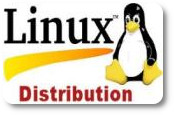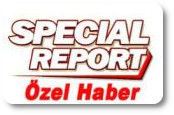General Public License (GPL)
What is GPL? What are the differences from other licenses?
General Public License (GPL)
Software License Agreements
Each software that is released includes a license agreement to protect the rights of the manufacturer and / or the user. When performing a license agreement, it should clarify the methods to be followed when copying the program, the license fee, the issue of support, and what rights the user has in the software. To date, perhaps hundreds of licensing agreements have been released. Although their names are very different, it is possible to make a simple categorization.
* Free software agreements
* Free non-free software agreements
* Non-free software agreements
The most popular of free software agreements is undoubtedly the GPL license. We will try to explain the equivalent of the free word later in our article. Other free software licenses include LGPL, X11 License, Python's license agreement.
Free software agreements are the license agreements that are generally adapted by companies and individuals who do not want to comply with all the articles of the GPL. The most popular are BSD, Apache, Zope, OpenLDAP, Phorum, Mozilla, Interbase, Netscape, QT. Non-free software agreements can be summarized as Original Artistic License and Apple Public Source License.
What is GPL? What are the differences from other licenses?
The GPL license agreement was developed in 1983 by Richard Stallman, a cleverly binding, encouraging, type of license that provides great opportunities to both the user and the manufacturer. The most important issue of the GPL is the need to distribute the software together with the source code. Even if the firm distributes its software in binary format, it must leave the source code accessible to everyone. The user can take this source code and examine it, make any changes on it, and use all or part of the code in his own projects and software. In fact, someone else can take a piece of code and make a few changes, can earn money by selling. But on one condition, the newly produced program must also be licensed with the GPL.
If you have read the above paragraph carefully, you may be wise to say that. Please be patient, the next topic will be related. Now let me briefly talk about the differences with other license agreements.
In particular, the GPL is a structure that advocates that the source code of the program should be open. Its main objectives are transparency, the user knowing what he is using, the rapid development of the software by many people, and so on. Although many think that this radical approach was introduced by the GNU GPL license, this is wrong. Much earlier, BSD and similar licensing agreements have made it very popular to distribute programs with source code, and there are still a lot of software being released with these licenses. Although the BSD license is basically similar to the GPL, the most obvious difference is that the software that has been modified and released has to be open and not necessarily BSD licensed. A large number of companies embed BSD-licensed programs into their own software as they are, or slightly modified them, without any feedback to the author and users, resulting in very high amounts of money. The GPL makes it impossible for the software produced to be GPL.
GPL makes no representations about the pricing of the software. Many license agreements fall into the free category, while GPL software does not have to be free. The manufacturer or organization may license, distribute and distribute its software under the GPL and may charge a fee. Although this article has been contracted from the very beginning, strangely enough, most GPL software is free. A general approach is to make money from the support offered to the user, not from the software. With this feature, the GPL is distinguished from many licenses.
A different logic applies to copying GPL software than most software available on the market. Let me summarize briefly: anyone can copy, distribute, and transfer a GPL software to any third party to distribute. There are no restrictions. If the software charges a fee, the user of the software is obliged to pay the fee. If not, there is no legal obligation.
Advantages and Disadvantages of GPL
Of course, the GPL fulfills the user protection, one of the main objectives of a license agreement, with great success. The user has almost the same rights as the software developer, who can simply change the code as he wishes, make it suitable for his own purposes, and sell it and earn money. The user also has the opportunity to improve himself, because he can examine the code of a large number of software, eventually he becomes a manufacturer and he starts to produce GPL software. These are not utopia, but developments that have ravaged the software industry today.
In the producer part, the advantages are separated by very fine lines. Firstly, it should be considered that there should not be a decrease in earnings since there is no obligation to release the software free of charge. GPL software has a huge target audience in the world. Overcoming the problem of am not reaching the target audience olan, which is a big problem especially for medium and small sized companies, does not constitute a big problem when the software is licensed with GPL. There is great support on the Internet against GPL software. http://www.freshmeat.net, http: //www.linuxapps.com,http: //www.hotscripts.com, http://www.linuxberg.com sites such as dozens of software announcements are made every day and tens of thousands maybe hundreds of thousands of people are informed about the software at a time. Since the user has a great sympathy for the GPL software, some large companies license their software with the GPL to enable them to create an infrastructure to make them look cute or to draw attention to the other products of a product they are discarding. With the increase in the number of target audience that is in demand for GPL software, the companies that provide support in this field have also gained a great source of income. GPL software spreads with incredible speed, just like a virus. If a successful software manufacturer is considering globalization and wants to do it in as little as a month, maybe the only way is to license its software with GPL.
Now, let us briefly reiterate the advantages of the GPL license without a comment.
* The user knows what is inside the software. Some of the backdoor placement cases that are suggested by the manufacturer is impossible. This is especially important for military institutions. Software that is the product of a different country will not want to use important intelligence units. Since the source code of the software licensed with GPL is in the middle, it can be used easily after the necessary examination.
* Because the software is used by a very large audience, the process of discovering errors and correcting them because they are developed by a very large audience is sometimes limited to minutes.
* The manufacturer has a great chance to improve the user base.
* The user is free to change parts that he does not like in the software. Even if he cannot do it himself, because the software is used by a very large audience, he can easily find the same version of the same software after searching the Internet. Or you can buy professional support for this business.
* The manufacturer obtains great prestige as a manufacturer of world-famous GPL software. It has the honor of being a company that has developed a program used by tens of thousands of people in the reference list. As a result, the outsiders look more professionally at the next developed software, and because the name of the firm is heard, the target audience becomes larger.
* Unlike licenses such as BSD, there is no risk that the developer's code is stolen because the software derived from a GPL software must also be a GPL.
* The number of people playing on the GPL code of a software sometimes reaches thousands. Therefore programs are developed quite quickly by a very large audience. This plays a major role in improving the quality of the software.
* GPL provides a competitive environment in the software industry. The requirement for paid and closed-code software to be relatively high quality compared to free and open-code ones arises. This improves the quality of the software and makes the industry as close to the utopian perfect competition market as possible. Not only the supply but also the demand starts to direct the sector.
* The user does not depend on the manufacturer for the development of the product. In particular, if the firm that produces a software used in critical applications fails or no longer supports the software, there is no victim. Since the source code is in the middle, the user can continue to develop the software if he / she wishes.
Some criticisms have been made to the GPL, especially recently. Some of these criticisms are carried to the size of a campaign. These criticisms have attracted our attention that the GPL may have some disadvantages. To summarize these criticisms without comment:
* Software developed with GPL does not have to be free, but it is usually the case. As the number and quality of GPL software increases, it reduces the flow of money in the software industry, which leads to a significant reduction in the income of many people and to the equality of certain products in the industry.
* There is a GPL software in almost every subject that can be produced with the current technology. When the code of GPL software is taken as a sample, the resultant product must be GPL, so a company considering to write a closed code software should not take a sample of this software. Therefore, limits to creativity are drawn.
* GPL producing companies or individuals generally do not provide sufficient support to their products. One reason for this is that the companies that produce GPL software cannot reach the target audience of incredible dimensions.
* GPL manufacturers or individuals usually charge for supporting their products. This means that GPL software is not free of charge.
* Since the source code of the GPL software is open, hackers can examine the code to find security vulnerabilities.
Result
GPL is one of the biggest developments in the IT sector in recent years, whether it is liked or criticized. The most popular of the GPL licensed software, the Linux Operating System and thousands of other software, IBM, SUN, Oracle, Corel has managed to attract world giants to their ranks, officials from another world giants like Microsoft to make speeches against the GPL and "Linux is not free why ". What is the result of the propagandas is difficult to put forward now, but one thing is certain, the GPL is a fact that cannot be underestimated in the IT sector anymore.











